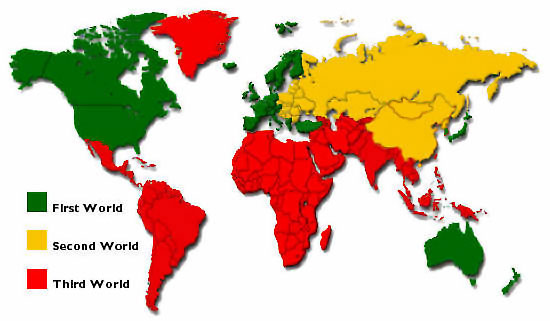For more than 4500 years many peoples have fought for dominance in what is now modern day Iraq (Mesopotamia). Though it is the United States and its "coalition of the willing" that now militarily occupies the country, the Greeks, Romans, Ottomans, and British have all buried their dead -- not to mention the indigenous peoples, too -- in this land. Iraq rests in the area between the Tigris and Euphrates rivers and the surrounding plain, lying at the heart of the fabled "Fertile Crescent." Much fought-over, its last native-born rulers before the 20th century were Nebuchadnezzar II and his descendants, who fell to Cyrus the Persian in 539 BC. From the earliest times, the struggles for the region have often been dictated by the need for natural resources. Here are some key battles from the violent history of Iraq. -- Tom X. Chao
For more than 4500 years many peoples have fought for dominance in what is now modern day Iraq (Mesopotamia). Though it is the United States and its "coaliti... more

50
CURRENT RANK
CURRENT SCORE
less stats more stats53.13
Rank (best ever) 8
Score (all time) 2631.00
Created 03/03/08
Views 2581
Votes [disabled]
view list history
1
2003 AD - Operation Iraqi Freedom
Saddam Hussein's presidency of Iraq included a failed invasion of Kuwait in 1990 that precipitated the Persian Gulf War. Following the war, US officials suspected Iraq of cease-fire violations, including the production of weapons of mass destruction (WMD). In dealing with United Nation arms inspectors, Hussein proved intractable for more than 12 years. On March 20, 2003, a combined military force consisting of 300,000 primarily US and British troops entered Iraq through Kuwait. The reported pretext for the invasion was to locate and destroy chemical, nuclear, and biological WMDs, and depose Hussein. To date, no WMDs have been found. Baghdad fell on April 9. President George W. Bush declared the end of major combat operations on May 1, however, coalition forces remain to stabilize the country, experiencing frequent insurgent attacks. On December 13, Hussein was captured near his home town of Tikrit. Coalition fighters continue to encounter fierce resistance. By May 10, 2007, more than 3382 American and coalition troops had died in Iraq with the civilian casualties estimated at about 62,570.
2
1915 AD - Siege of Kut-al-Amara
In World War I, England realized it must protect its Iraqi oil production interests against the German-Turkish alliance. In 1914, British forces began the Mesopotamian campaign at Al Faw. After several easy victories, an attempt on Baghdad was launched. However, the Anglo-Indian forces, commanded by Sir Charles Townshend, were undermanned and their supplies overstretched. In November, 1915, the British approached the ruins of Ctesiphon, on the Tigris 20 miles SE of modern Baghdad. The Turks, under Nur-ud-Din, had positioned about 18,000 experienced men in two trenches on either side of the river. The better-prepared Turks fended off the British, who dragged themselves back to occupied Kut-al-Amara. The Turks besieged the city for 143 days, ultimately forcing a British surrender. 10,000 men went into brutal captivity. The following year, the British finally took Baghdad, but the Siege of Kut-al-Amara was the army's greatest military defeat.
3
1534 AD - Capture of Baghdad by Suleyman the Magnificent
In the early 1500's, the Ottomans began their rise to power as the next great Islamic state. The first ruler was Sultan Selim I (
4
1258 AD - Mongols besiege Baghdad
Mesopotamia had become known as
5
637 AD - Battle of Al-Qadisiyah
The Persian Sasanians ruled Mesopotamia from 224 AD. They thrived for centuries, but eventually became distracted by fighting the Romans and amongst themselves. Ultimately, an unlikely outside force would topple them. The Arabs had been tribesmen, unorganized and militarily primitive. The new religion of Islam, founded by Muhammad, united the tribes. In 634, the Arab campaign against the Sassanians began. 18,000 Arab tribesmen, led by General Khalid ibn al Walid (
6
53 BC - Battle of Carrhae
Marcus Licinius Crassus became governor of Syria in 55 BC. A triumvir with Pompey and Julius Caesar, he sought to increase his reputation by invading Parthian Mesopotamia. With seven legions, about 44,000 men, he crossed the Euphrates. However, he strayed from the river into the open desert. Near Carrhae (Harran), the Parthians approached with 10,000 mounted archers. The Romans held a theoretical advantage, but lacked desert warfare experience (fighting at midday in June?), and staggered before the Parthian arrows, fired from compound bows. Also, the Parthian commander, General Suren, had thoughtfully brought 1000 camels to re-supply his archers with arrows. Surrounding the Romans, the Parthians turned the battle into dusty target practice. Only 10,000 Gauls were reported to survive. In attempting to surrender, Crassus was killed. Roman prestige plunged in the east.
7
331 BC - Battle of Gaugamela
In 334 BC, Alexander III ("The Great") crossed the Hellespont (Dardanelles) with 7000 cavalrymen and over 30,000 infantrymen. During this expedition, Alexander defeated the king, Darius III, at the Battle of Issus. Darius retreated to the Plain of Gaugamela, near Arbela (Irbil). There he massed a enormous army and ordered the plain cleared for his scythed chariots and war elephants. Darius' army stood in a massive line. Alexander's outnumbered Macedonian forces attempted to draw the Persians away from the prepared ground. In countering, the Persian cavalry opened gaps in their own line, into which Alexander led his personal cavalry. The Persian chariots charged the Macedonians, which yielded and then decimated their drivers with projectiles. Alexander's elite cavalry turned and attacked from the rear. When Darius saw his troops in disarray, he fled, prompting a full retreat. Alexander had ended the Persian empire founded by Cyrus II.
8
Around 1263 BC - Assyrian King Shalmaneser I defeated Shattuara
Assyria developed around the city of Ashur on the upper Tigris, weaker than other states appearing after Hammurabi's dynasty, including the Kassites and the Hurrians/Mitanni. Assyria was long ruled by the Mitanni, but regained autonomy during the Middle Assyrian Empire. In his second year of rule, Shalmaneser I attacked the breakaway state of Uruatru in southern Armenia. Shattuara II of Hanigalbat, leading the rebellion with the aid of the Hittites, blockaded the mountain passes and waterholes. With a desperation born of thirst, the Assyrians pounded the Mitanni kingdom into submission. Afterwards, Shalmaneser claimed to have blinded 14,400 men, a nasty bit of psychological warfare. His inscriptions mention the utter devastation of nine fortified temples, 180 Hurrian cities, and the Hittite and Ahlamu armies. Obviously, the Assyrians were not well-liked.
9
Around 2300 BC - Military campaigns of Sargon the Great
Sargon of Akkad may have been the world's first empire-builder. Legend states that he was found floating in a basket and brought up by a gardener. Later it is known he became a cupbearer to King Ur-Zazaba of Kish in Sumer. Sargon rose from obscurity to overthrow Lugalzaggisi of Uruk, famously forcing the defeated ruler into a yoke and leading him to the gate of Enlil, a god, at Nippur. Sargon also attacked 34 Sumerian cities. In the process, he tore down the walls of the vanquished, imprisoned 50 ensis (city-state rulers), and "cleaned his weapons in the sea" (Persian Gulf). Thus the Akkadian empire rose and the Mesopotamian military tradition was born.
10
2525 BC - Battle between Lagash and Umma
By 3000 BC, the Sumerians had developed into the earliest civilization of Mesopotamia. The societies were organized into city-states, which warred constantly over the control of water. Two of these, Lagash and Umma, sat 18 miles apart and feuded for generations over the fertile region known as Gu'edena. In 2525, King Eannatum of Lagash defeated Umma using armored soldiers in phalanx formations, and also chariots pulled by onagers (wild asses), an invention frequently credited to the Sumerians. How do we know of this battle? It was recorded by the king on a stone monument, "the Stele of the Vultures."
Not watching this list (get updates on this list).
(all people watching this list)
MORE LISTS


RECOMMENDED LISTS


COMMENTS







 ).
).




